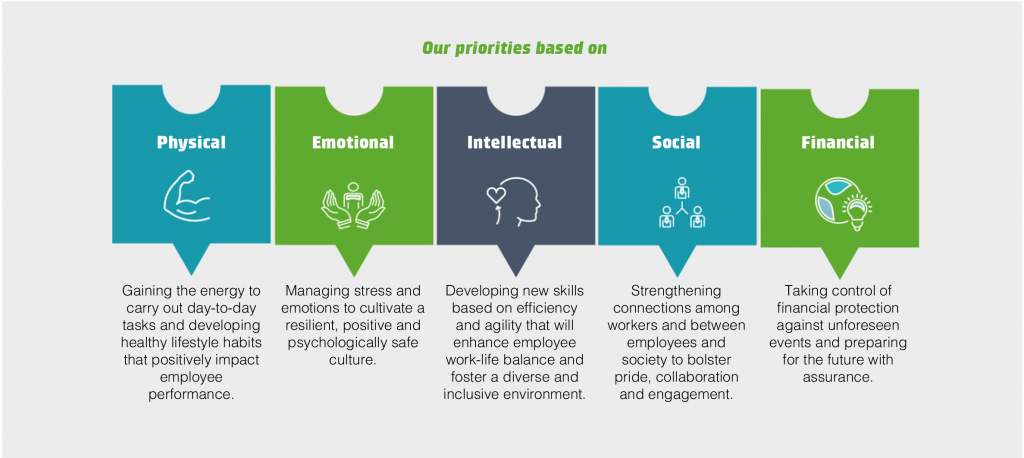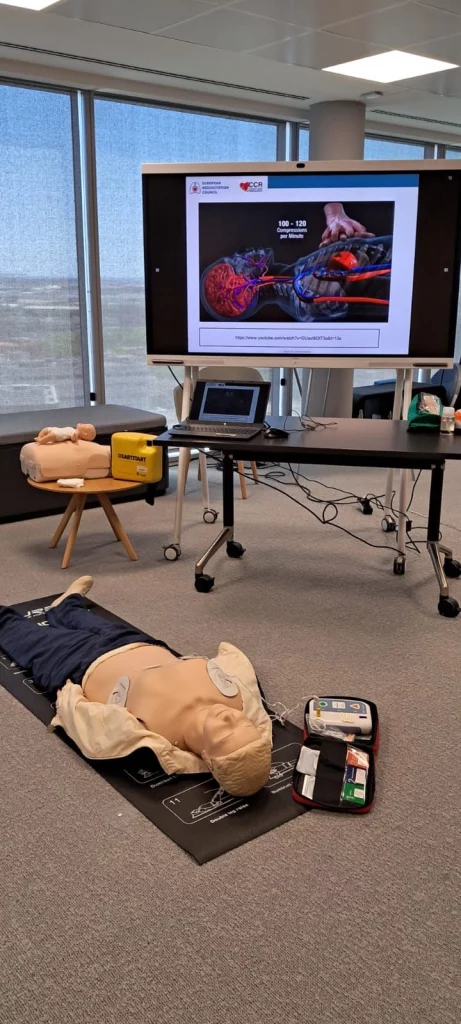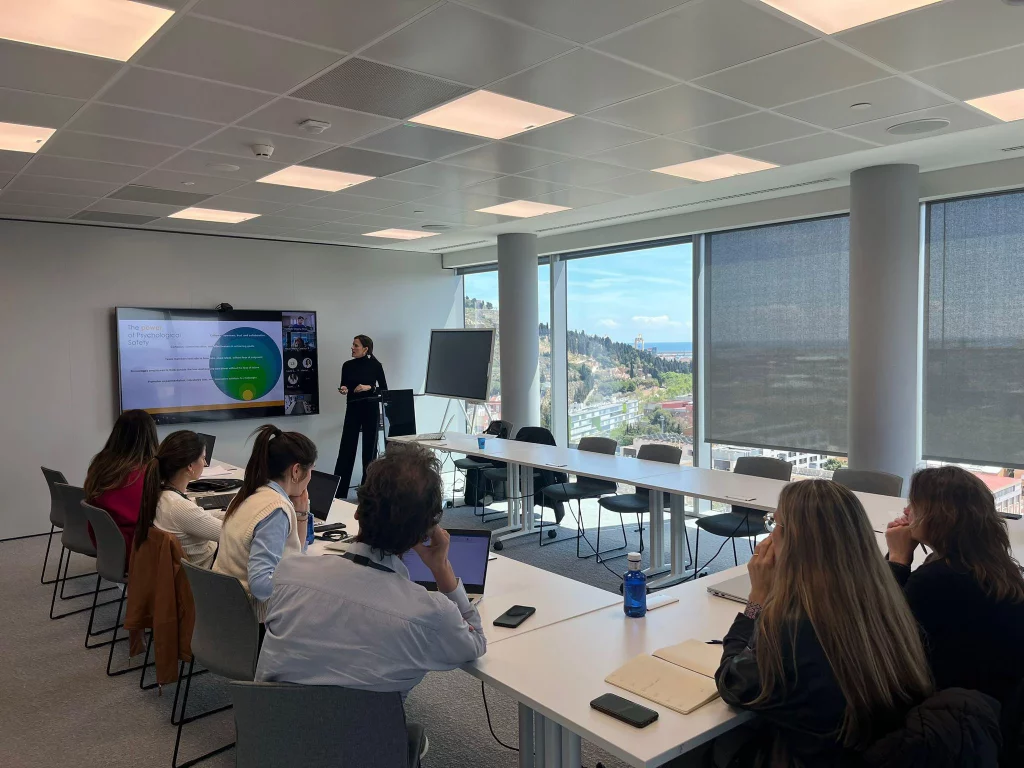Trends
Trends
NOV
21
2024
Global
Five pillars of corporate wellbeing
We are witnessing a gradual paradigm shift in the workplace and production, which may well have begun in the wake of the COVID-19 pandemic, supported by a significant mass of young talent with new training and interests that forces corporations to rethink their relationship with their employees.
According to the World Health Organisation (WHO) a healthy work environment is ‘one in which workers work together to implement a process of continuous improvement to protect and promote the health, safety and well-being of all workers and the sustainability of the workplace’. Companies that address the well-being of their employees improve their performance not only in economic terms, but will also provide a breeding ground for the creation of new ideas that will further the development of the company, through the expression of its best talent.
Companies like Cellnex have a diverse, international workforce that is currently rejuvenating, so their wellbeing is a priority strand of the people strategy. “At Cellnex, the wellbeing, health and safety of our employees is a core priority, as proven by the fact that it is part of the company’s strategy and is part of the ESG Master Plan 2021-2025”, comments Laia Berna, head of Workplace at the company.
Tackling corporate wellbeing from all fronts
Wellbeing is addressed from an overarching perspective and aligned with the rest of the initiatives developed by the Human Resources Department, placing the employee front and centre. To this end, the company works on five fundamental dimensions:
- Physical: aimed at promoting healthy habits that impact health.
- Emotional: aimed at helping to manage stress and emotions, to develop a resilient, positive and psychologically safe business culture.
- Intellectual: based on helping to develop tools that promote work-family balance, as well as fostering a diverse and inclusive environment.
- Social: aimed at generating cohesion among the various teams and countries to reinforce pride of belonging and commitment.
- Financial: aimed at training employees to optimise management of their finances, helping them to face a future in which wellbeing is guaranteed.
Several countries with one shared goal
In the case of an organisation with a footprint in several countries, overarching actions, accessible to all employees, are complemented by initiatives responding to the unique character of each country, allowing the ensemble of actions related to wellbeing to respond to the entire diverse workforce.
“The initiatives we have brought to bear this year take into account the transformational process in which the company is immersed, which is why we have decided to place a strong focus on the social and emotional pillars,” says Laia Berna. “In this regard, we would like to highlight the sessions aimed at providing tools to strengthen mental health and resilience, which have had a great impact on our co-workers.”
“In the psychological safety sessions, we explore how to build an environment based on trust, open communication and emotional wellbeing” says Palma Valdivielso, an expert in corporate wellbeing. She adds “participants acquire practical tools to create a culture where everyone feels safe expressing themselves, innovating and collaborating without fear, thereby strengthening team commitment and performance. In a psychologically safe space, innovation becomes a habit, and work becomes a place of shared growth.”
Although mental health has been the backbone of various sessions, the company, basing its actions on the fundamental pillars of its Wellbeing Action Plan, has also launched awareness-raising initiatives to tackle physical illnesses such as glaucoma, cancer or stroke, conditions for which early detection is key to recovery. There have also been cardiopulmonary resuscitation and AED courses, nutrition, postural training, etc.
“Another fundamental element for the development of our Wellbeing Action Plan is the commitment and collaboration of Senior Management in each country, which helps to design actions in accordance with the different cultures present in Cellnex,” says Laia Berna. For example, a Wellbeing room has been created at the Cellnex’s headquarters in Barcelona, offering activities, guided physical health sessions and other health services such as physiotherapy rehabilitation, with specific material available to employees. Joint initiatives have been carried out at Cellnex France, with a team taking part in a half marathon, as well as workshops on stress management, team-building days bringing together teams from different areas, or training on new corporate tools or leadership, to name just a few. As a further example, Cellnex Switzerland also opted to contribute to the development of wellbeing actions. In addition to holding workshops, webinars and mentoring, they worked on an initiative that can influence co-workers’ level of commitment and pride of belonging, such as the one-to-one meeting with the country-level CEO.
Ultimately, it is critical to acknowledge that corporate wellbeing improves employee satisfaction and connectedness to their work environment, as well as driving positive results and fostering innovation. Global and local initiatives are proof positive that a comprehensive approach to the physical, emotional, intellectual, social and financial dimensions of wellbeing can significantly transform the employee experience and ultimately benefit the entire organisation.



















